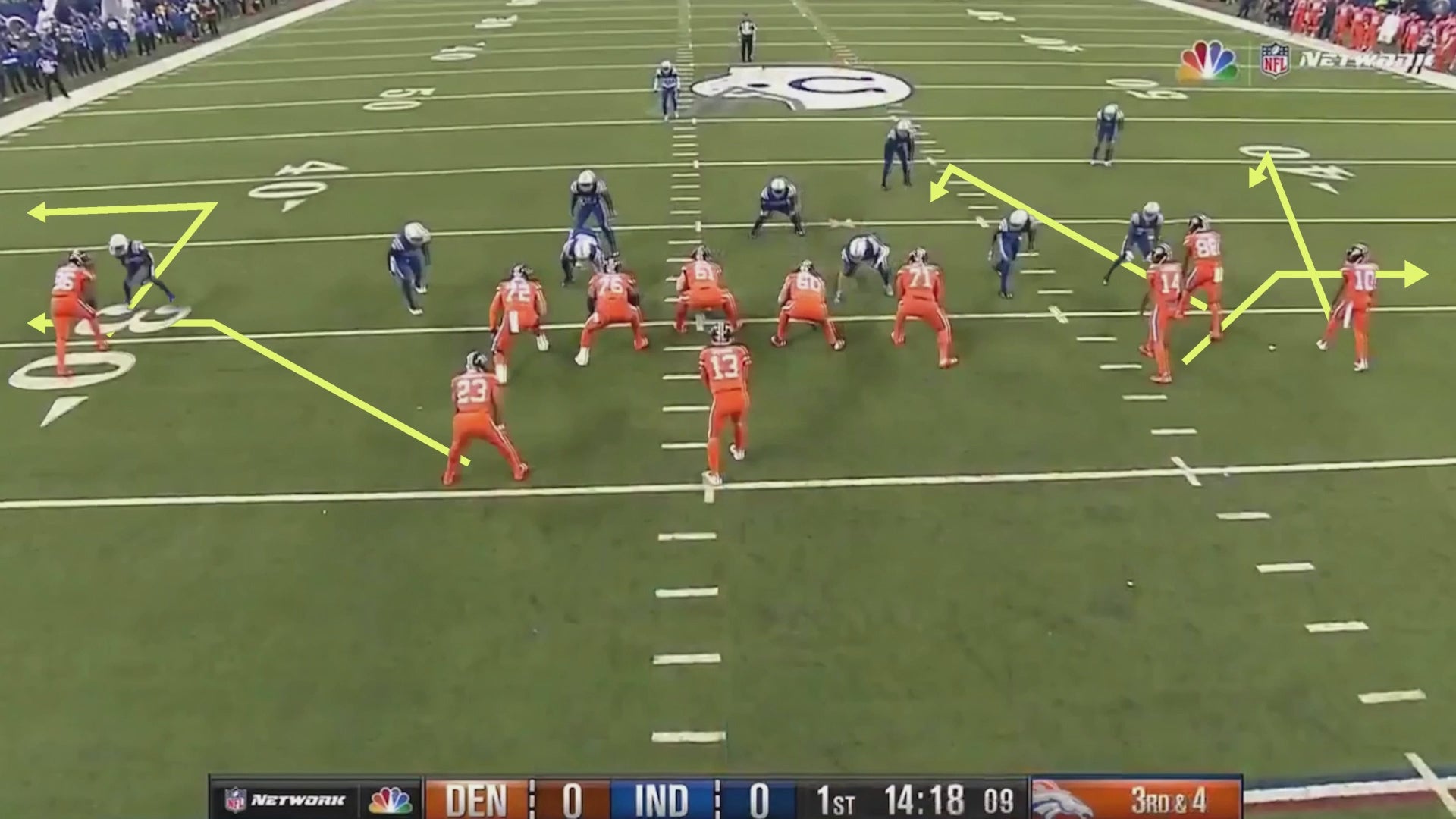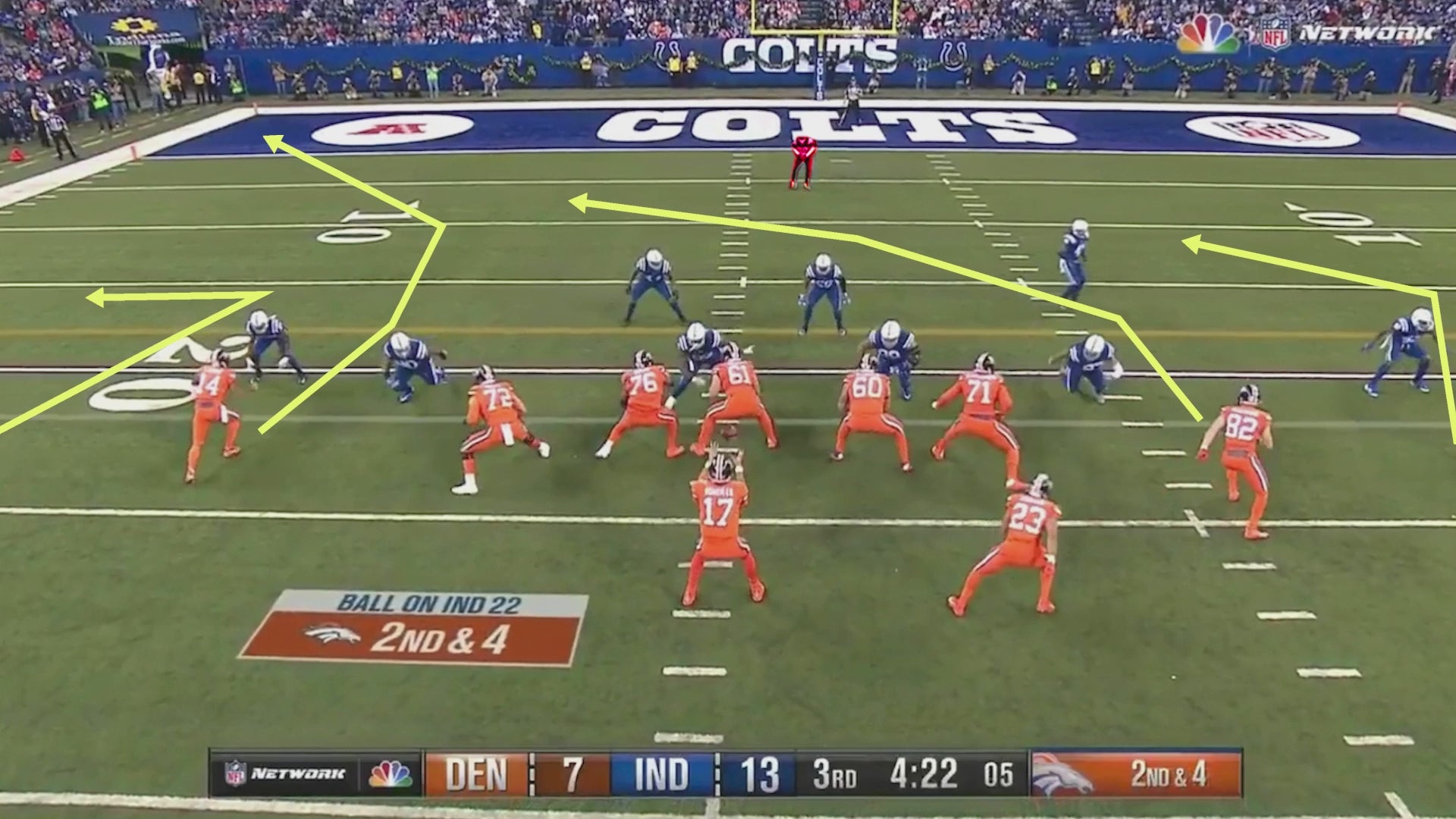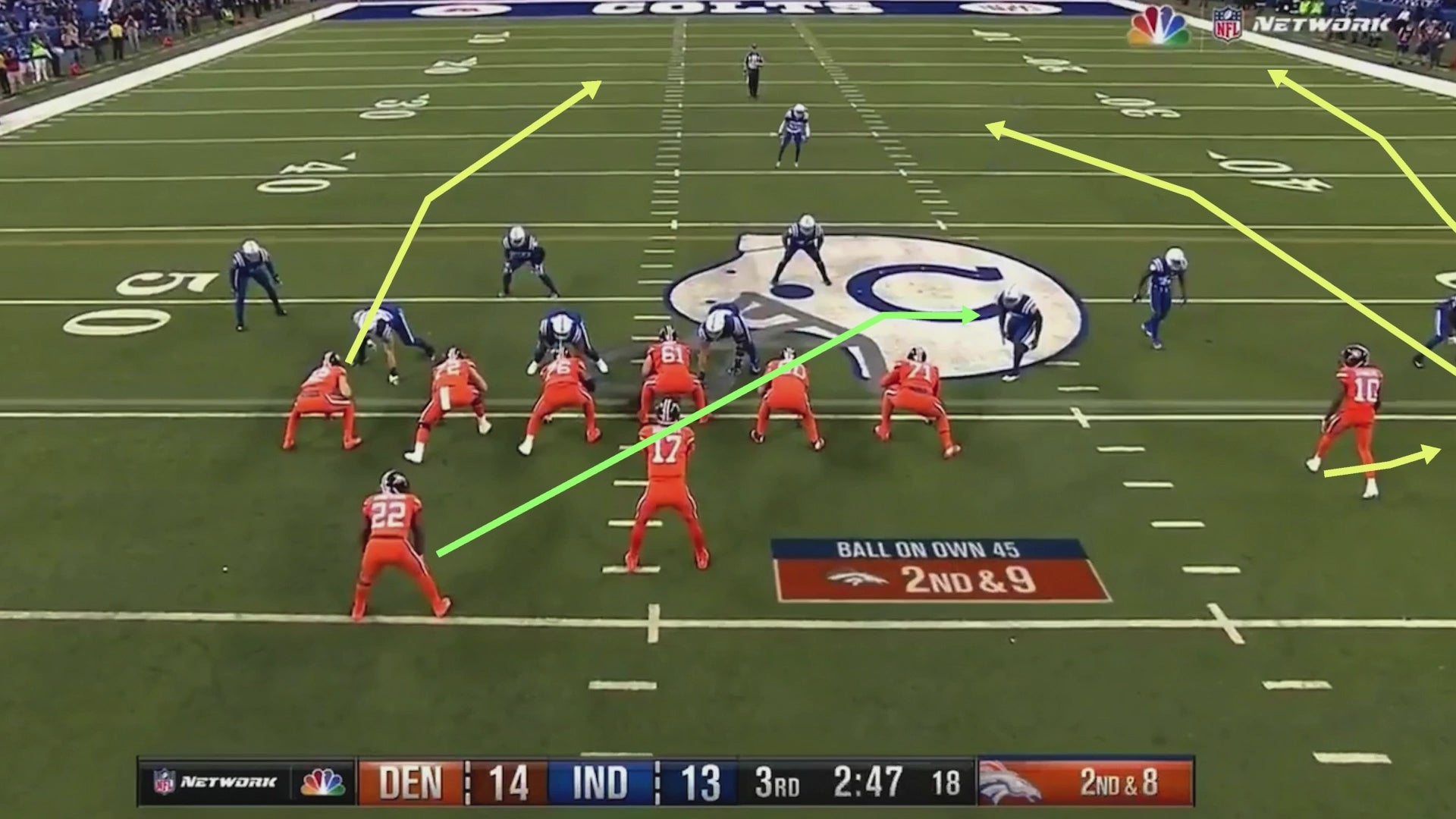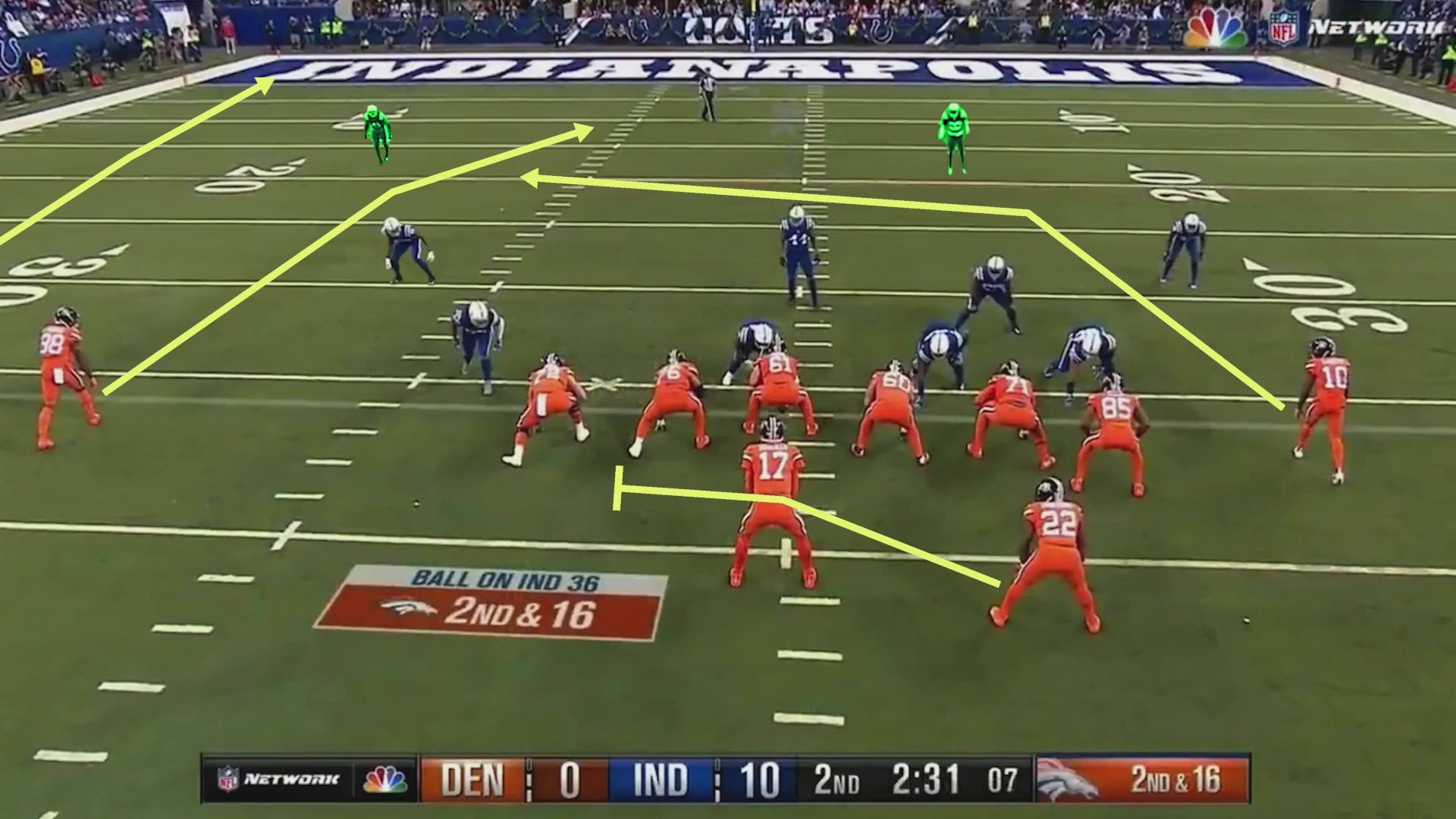Game 5 Install
Study Hard
Season 01 • Game 06
Game 6 Playbook
Welcome to your 6th start Quarterback. Im very excited to see what you can do in the game - your time has come. Study the plays below - they're this week's game plan. You'll need to know them cold to execute on game day.
Installation - A term used to denote installing the plays for an offense.
If you have any questions or are unsure about something feel free to leave a comment at the bottom of your playbook and I'll try my best to answer.
Game 6 will be released and ready to play on Sunday, January 21st.
** Important note - we use the Mike Holmgren play calling system.
- Holmgren expected his quarterbacks to know the play so well that on game day he would only call the play and not the formation
- So on Sunday all you will hear is the play call
- You will be required to remember the formation and any protection calls in the huddle 🙌🏽

Bunch Right Switch 22 scan Spacing Y Omaha

Y to Double Rt Switch Ace Rt Smash Return Wave

Trey Left Open Fake 38 Zola 989 F swish H Insert

Double Right Tight Switch Fake 39 Louie Ghost Busters
The Holy Roller
The term "holy roller" in football typically refers to a specific play that occurred in a game between the Oakland Raiders and the San Diego Chargers on September 10, 1978. The play is often referred to as the "Holy Roller" or the "Immaculate Deception."
During the game, the Raiders were trailing the Chargers by six points with only ten seconds left on the clock. The Raiders were near the Chargers' goal line and were desperate to score a touchdown. Raiders quarterback Ken Stabler dropped back to pass but fumbled the ball forward due to pressure from the Chargers' defense.
As the ball rolled forward, Raiders running back Pete Banaszak tried to recover it but ended up batting the ball towards the end zone with both hands. Tight end Dave Casper then opportunistically kicked the ball toward the goal line and ultimately fell on it in the end zone. The officials ruled it a touchdown, and the Raiders went on to win the game 21-20.
The controversial play led to a change in NFL rules. Subsequently, the league implemented a rule that prohibits an offensive player from advancing a fumble if it occurs on fourth down or during the last two minutes of a half. This rule aimed to prevent teams from intentionally fumbling the ball forward to gain an advantage, as was the case in the Holy Roller play.
The Holy Roller play remains one of the most memorable and debated moments in NFL history, illustrating the unpredictability and excitement that can occur during crucial moments in football games.
Receivers vs Man to Man
Beating man-to-man coverage is a crucial skill for wide receivers in football. Man-to-man coverage involves a defender assigned to cover a specific receiver throughout the play. Wide receivers employ various techniques to gain separation and create opportunities to catch passes against their man coverage defenders. Here are some common techniques:
1. Release Techniques:
- Press Release: Wide receivers can use a quick jab step, swim move, or rip move to beat press coverage at the line of scrimmage. The goal is to release from the cornerback's physical contact and get into the route.
- Speed Release: Receivers with exceptional speed can use a burst of acceleration off the line to quickly get past the defender. This relies on the receiver's ability to outrun the coverage.
2. Route Running:
- Stemming: Effective route running involves using head fakes, shoulder dips, and quick footwork to deceive the defender on the route. Changing the stem or initial path of the route subtly can create separation.
- Double Moves: Receivers may use double moves, like a stutter-step or head fake, to make the defender bite on a fake route before breaking in the opposite direction.
3. Footwork:
- Quick Feet: Sharp, precise footwork helps receivers make sudden cuts and changes of direction. Quick, controlled steps can create separation from a defender.
- Crisp Breaks: Accelerating out of breaks in the route with sudden stops or cuts can leave the defender trailing and struggling to recover.
4. Physicality:
- Hand Fighting: Receivers may engage in hand fighting with the defender to create separation. Swiping away the defender's hands or using a swim move can help the receiver get free.
- Body Positioning: Proper body positioning, such as using the body to shield the defender from the ball, can be crucial when making contested catches.
5. Understanding Defensive Coverages:
- Reading the Defender: Recognizing the defender's positioning, leverage, and coverage technique allows the receiver to adjust his route accordingly.
- Exploiting Weaknesses: Identifying and exploiting the defender's weaknesses, such as speed differentials or susceptibility to specific moves, can be a strategic advantage.
6. Ball Tracking and Adjustments:
- High-Pointing the Ball: When the ball is in the air, receivers can use their leaping ability to go up and catch the ball at its highest point, making it difficult for the defender to make a play.
- Adjusting to the Ball: Receivers must be adept at adjusting their body position to make catches on throws that may not be perfectly accurate.
Wide receivers often combine these techniques based on the specific situation, the defender they're facing, and the type of route they're running. Developing a diverse skill set and having a deep understanding of the game helps wide receivers consistently beat man-to-man coverage.
Are you ready?
Make sure you've studied the playbook and are ready to perform. When game time rolls around all you'll hear from me is the play call and then it's up to you to execute.
If you have any questions be sure to leave a comment below and I'll do my best to coach you up before game time.




Leave a comment
This site is protected by hCaptcha and the hCaptcha Privacy Policy and Terms of Service apply.